How Long It Takes Spray Paint Take to Dry – On Wood, Metal, Plastic, Glass
Spray painting is a popular and efficient method to give a fresh look to various surfaces, whether it’s wood, metal, plastic, or glass. However, one common question that arises among DIY enthusiasts and professionals alike is: how long does it take for spray paint to dry? Understanding the drying time of spray paint is crucial for achieving the best results and avoiding mishaps like smudges, drips, or peeling.
Drying time for spray paint can vary significantly depending on factors like the type of surface, paint, temperature, and humidity. In general, spray paint can dry to the touch within 30 minutes to an hour, but it may need up to 24 hours to fully cure. To achieve a quicker drying time, it’s essential to follow some helpful tips, such as applying thin coats and working in optimal conditions.
In the following sections, we will explore the different factors that affect spray paint drying time and share various techniques to make it dry faster. By the end of this article, you’ll be well-equipped with the knowledge to tackle your spray painting projects more efficiently and with greater confidence.
How long does it normally take for spray paint to dry?
When it comes to spray paint, drying time can vary based on a number of factors, such as paint brand, paint type, surface, humidity, and temperature.
Generally, spray paint will take about 15-20 minutes to become touch dry on a surface. However, it may take up to 24 hours or even 72 hours to fully cure and become hard and durable, depending on the specific spray paint used and the environmental conditions.
- Touch Dry: This stage happens within the first 15-20 minutes after applying spray paint, where the paint is dry to the touch but still susceptible to damage. It’s essential to avoid handling the object at this point.
- Hard Dry: In this stage, the spray paint is harder and more resistant to damage. It usually takes between 4-24 hours to reach this stage, but environmental factors like humidity and temperature can affect the drying time.
- Cure Time: This is the final stage when the spray paint has fully dried and cured, becoming hard and durable. Cure time can range from 24 to 72 hours, ensuring that the paint is thoroughly dry and ready for use.
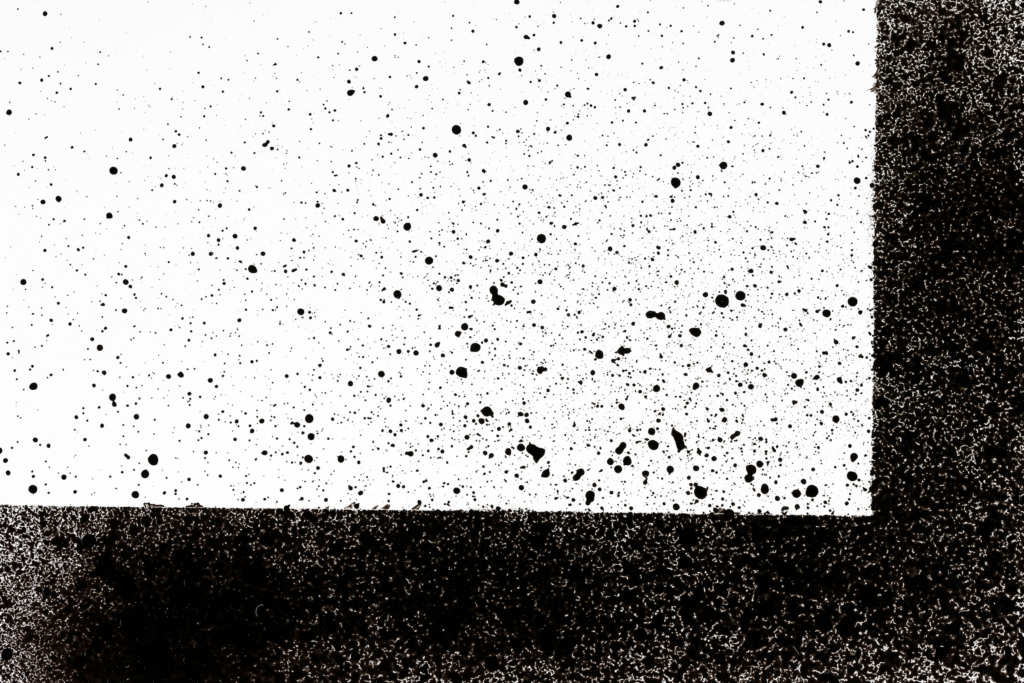
Keep in mind that drying times can also differ based on the type of surface you are painting. For example:
- Plastic surfaces: Spray paint typically takes about 30 minutes to become touch-dry on a plastic surface.
- Glass surfaces: Painting on glass can be tricky, so it’s recommended to apply each coat gently, waiting at least 15 minutes before adding a new one.
Remember, patience is essential when working with spray paint. Allowing the paint to dry properly ensures a professional-looking result that is both durable and long-lasting.
In the next section, we’ll go over some tips and tricks for speeding up the drying process without affecting the quality of your paint job.
How Long Does It Take Different Types of Spray Paint to Dry?
When it comes to drying times for different types of spray paint, it’s important to remember that each type has its own unique drying properties. In this section, we’ll take a look at the drying times for some common spray paint types, including latex, enamel, lacquer, oil-based, and acrylic paints.
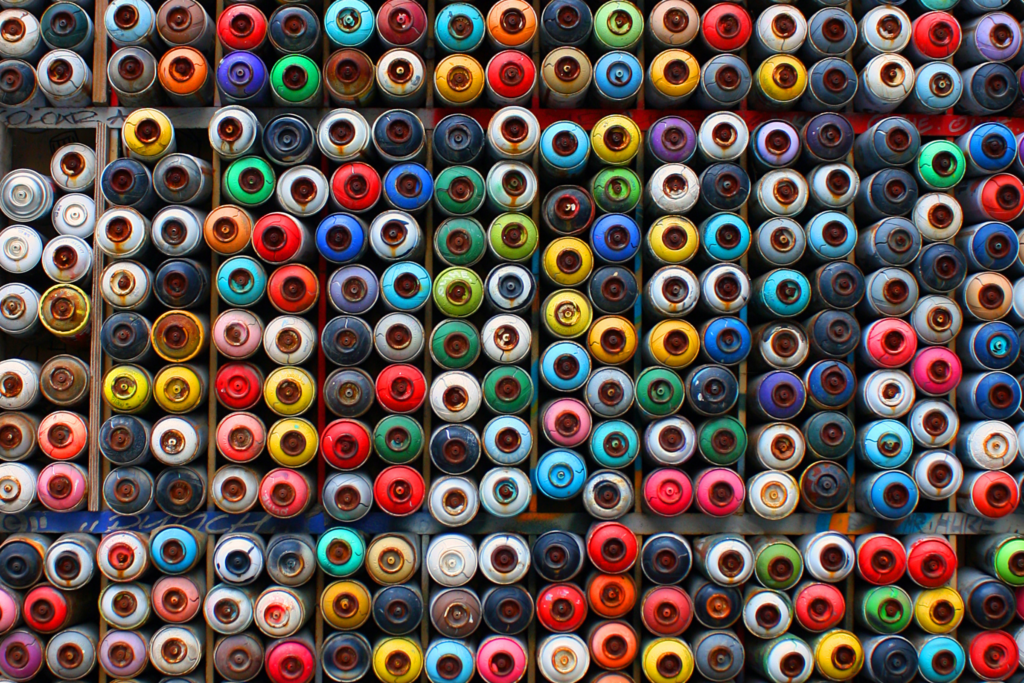
Latex spray paint usually dries to the touch within 30 minutes to an hour, depending on factors such as humidity and temperature. A full cure may take up to 24 hours, so give your project enough time before handling it too much.
Enamel paint has a slightly longer drying time. It can take anywhere from 1 to 3 hours to become dry to the touch, but be aware that it might take up to a week for the paint to reach its maximum hardness and durability.
Lacquer paint, known for its shiny finish, will typically dry to the touch within 30 minutes to an hour; however, it may take up to 24 hours to harden. Take into account the number of coats you apply, as multiple coats can lengthen the drying time.
Oil-based spray paint generally takes longer to dry compared to other types. It can be dry to the touch in 2 to 4 hours, but the full curing process might take up to 24 hours, or in some cases, even a few days.
Acrylic spray paint is known for its fast-drying properties. It often dries to the touch within 15 to 20 minutes. Despite its quick initial drying time, you should still allow up to 24 hours for the paint to cure fully.
Here’s a table summarizing the information:
| Paint Type | Dry to Touch | Fully Cured |
|---|---|---|
| Latex | 30 min – 1 hour | 24 hours |
| Enamel | 1 – 3 hours | Up to 1 week |
| Lacquer | 30 min – 1 hour | 24 hours |
| Oil-Based | 2 – 4 hours | 24 hours – days |
| Acrylic | 15 – 20 minutes | 24 hours |
Keep in mind that these times may vary depending on factors such as temperature, humidity, and the application surface. Be patient and always refer to the manufacturer’s instructions for the best results.
Now that we’ve covered the drying times for different types of spray paint, let’s move on to discuss some tips for speeding up the drying process.
Factors That Affect Spray Paint Drying Time
How long does spray paint take to dry on wood, metal, plastic, glass, and other materials?
The drying time of spray paint varies depending on the material and surface you’re painting on. Different materials have different absorption rates and textures, which can impact drying time. Here are some examples:
- Plastic: Spray paint on plastic surfaces may take longer to dry due to its non-porous nature, often requiring 20-30 minutes to become touch-dry and around 24 hours for a full cure.
- Wood: Wood is a porous material, making it more absorbent, so spray paint on wood typically dries faster, in about 10-15 minutes to touch and 24 hours for a complete cure.
- Metal: Metal surfaces, like doorknobs and cars, get warm quickly in dry conditions. Spray paint on metal can dry in as little as 10 minutes, but full curing may still take 24 hours.
- Glass: Glass is a tricky surface to paint on, as it’s slick and non-porous. It can take longer for spray paint to dry on glass, around 20-30 minutes to touch and 24 hours for a full cure.
- Canvas: Canvas surfaces may take between 15-20 minutes for spray paint to dry and up to 24 hours for a full cure.
- Rubber: Rubber surfaces may require 20-30 minutes to become touch-dry and take up to 24 hours to fully cure.
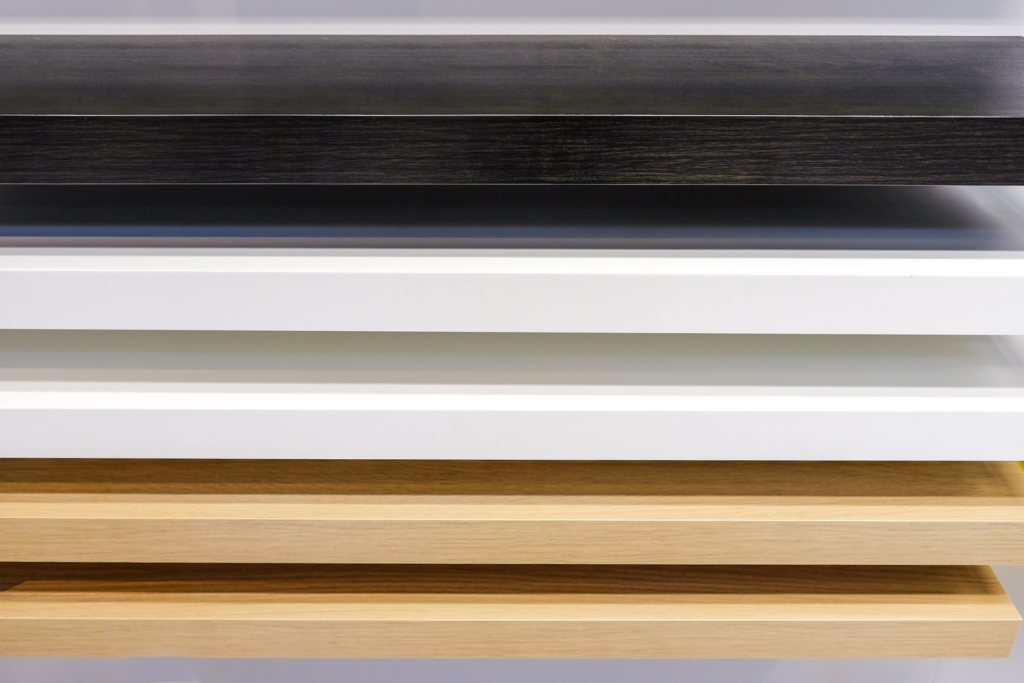
Influence of Temperature and Humidity
Temperature and humidity both impact the drying time of spray paint. Ideal conditions for spray painting are between 50-90°F (10-32.2°C), with humidity levels below 85%.
If you want your spray paint to dry in about half an hour to an hour, aim for a temperature of 65-70°F (18.3-21.1°C). Humid climates and weather conditions can slow down the drying process, while drier climates can speed it up.
Role of Paint Brand and Quality
The quality and brand of the spray paint can also affect its drying time. Higher-quality paints or those specifically formulated for fast drying may have shorter drying times compared to cheaper alternatives. Keep an eye out for brands that offer quick-drying options if you’re in a hurry.
Following these guidelines can help you better understand the factors affecting spray paint’s drying time and choose the right conditions and materials for your project.
The next section will provide some helpful tips for drying your spray paint even faster.
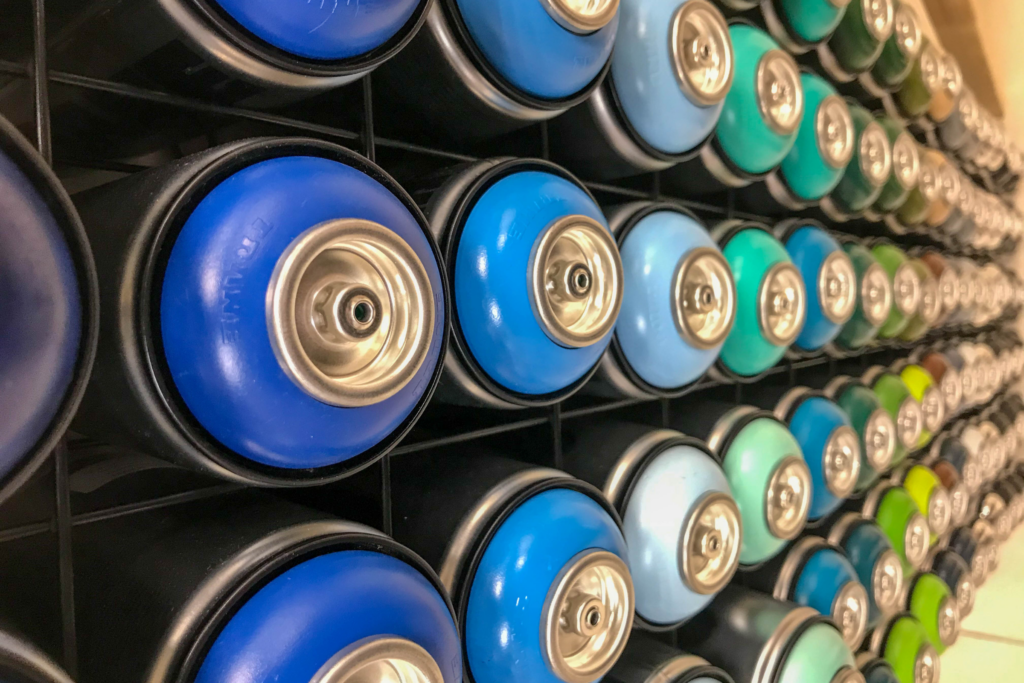
Tips to Speed up Spray Paint Drying
Applying Thin Coats
To help speed up the drying process, apply multiple thin coats of spray paint instead of one thick coat. Fine coats will dry much faster and are less likely to cause drip marks.
Be sure to give each layer enough time to dry, about 15 minutes on average, before applying additional coats.
Creating Proper Ventilation
Good air circulation is essential to speed up drying time. Open any windows and doors in the area where you are working to ensure proper ventilation.
Additionally, use a fan to help move air across the painted surface and aid in the evaporation process, which will make the paint dry faster.
Using a Hairdryer or Heat Gun
Applying heat to the painted surface accelerates the drying process. You can use a hairdryer or heat gun to help your spray paint dry faster. Hold the heat source about 12 inches away from the painted surface and move it in a sweeping motion to distribute heat evenly.
Be careful not to overheat the paint, as this can cause it to bubble or crack.

Using Fast-Drying Spray Paint
Consider using a fast-drying spray paint product, as this will reduce drying time significantly. Fast-drying spray paints often contain a dehumidifier that helps to evaporate moisture quickly, which in turn speeds up the drying process.
As you continue your spray painting project, remember these tips to help you save time and get professional results. By applying thin coats, providing proper ventilation, using a heat source, and opting for fast-drying spray paint, you can make the most of your spray painting experience.
Post-Drying Treatments
After your spray paint has dried, there are a few steps you can take to ensure a smooth and durable finish. In this section, we’ll discuss applying a clear coat and polishing the surface.
Spraying a Clear Coat
To protect your freshly painted surface and add extra durability, consider applying a clear coat. This is particularly important for furniture and surfaces that will be exposed to wear and tear. There are two popular options: polyurethane and lacquer.
Polyurethane paint provides excellent protection against water damage, scratches, and fading. It usually dries within 24 hours and comes in a variety of finishes, including glossy, semi-glossy, and matte. To apply, follow these steps:
- Ensure the spray paint has fully dried.
- Shake the polyurethane can vigorously for a minute.
- Holding the can 10-12 inches from the surface, apply a thin and even coat.
- Allow it to dry for 24 hours before applying a second coat for added protection.
Lacquer spray paint, on the other hand, dries faster and provides a high-gloss finish. However, it may be more prone to cracking and is less durable than polyurethane. To apply lacquer:
- Make sure the spray paint has fully dried.
- Shake the can of lacquer well for about a minute.
- Hold the can 10-12 inches away and apply a thin, even coat.
- Allow it to dry for 15-20 minutes before applying additional coats as needed.
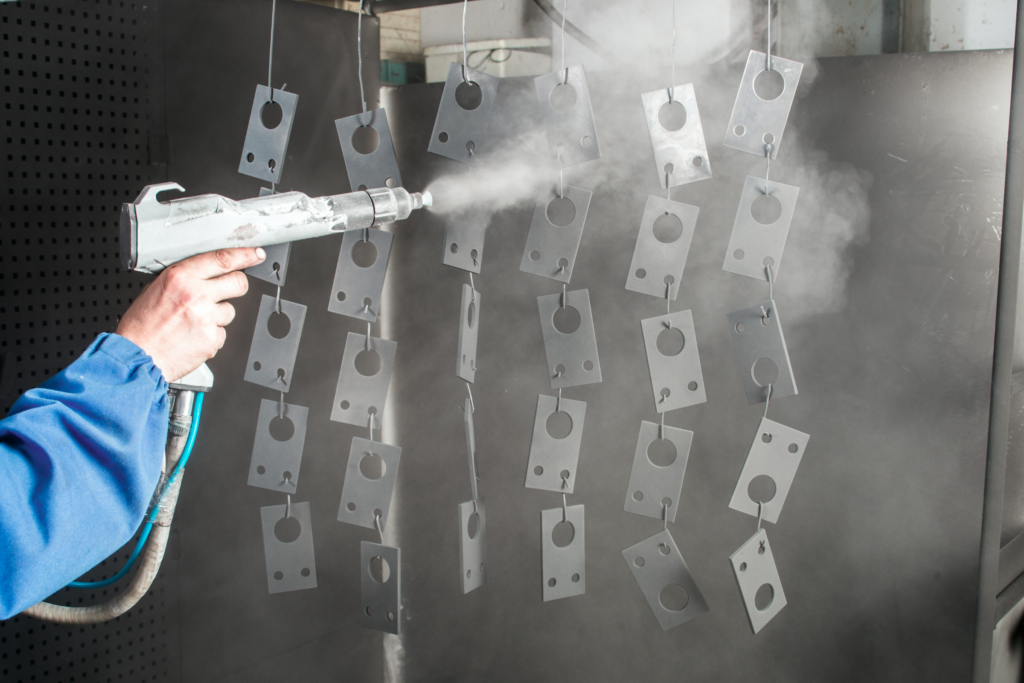
Polishing the Surface
Once your clear coat has dried, consider polishing the surface for a smooth and shiny finish. This is especially helpful with furniture since it can enhance the overall appearance and make it easier to clean.
You can use a simple furniture polish or a more specialized product, depending on your preference. Here’s how to polish your surface:
- Wait until the clear coat is fully cured (typically 1-2 days after applying).
- Apply a small amount of polish to a soft, clean cloth.
- Gently buff the surface in a circular motion, being careful not to push too hard or scratch the finish.
- Continue until the entire surface has an even and glossy appearance.
- Wipe off any excess polish with a clean cloth.
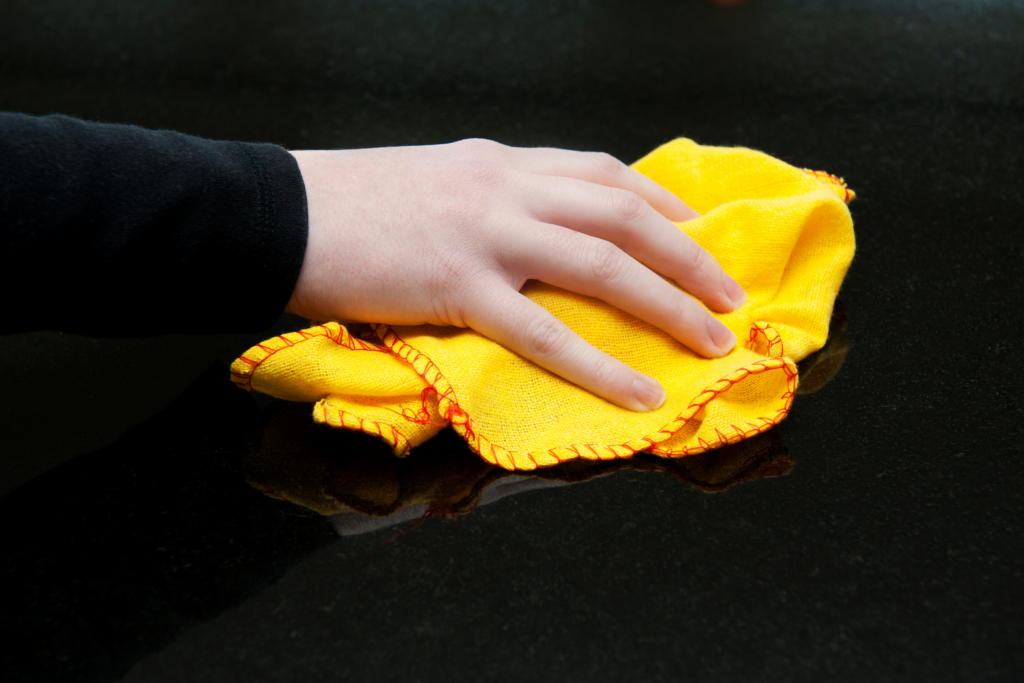
By following these steps, you can ensure that your spray-painted surfaces not only look great but also stand up to the test of time. The next step in the process is…
Let Us Know How We’re Doing!
Did this expertly prepared resource answer your question?
Do you have another question about home maintenance, home improvement projects, home appliance repair, or something else?
Get more information, send in questions and keep the discussion going by contacting the I’ll Just Fix It Myself company customer service team at at 1-800-928-1490 or Email us at [email protected]
